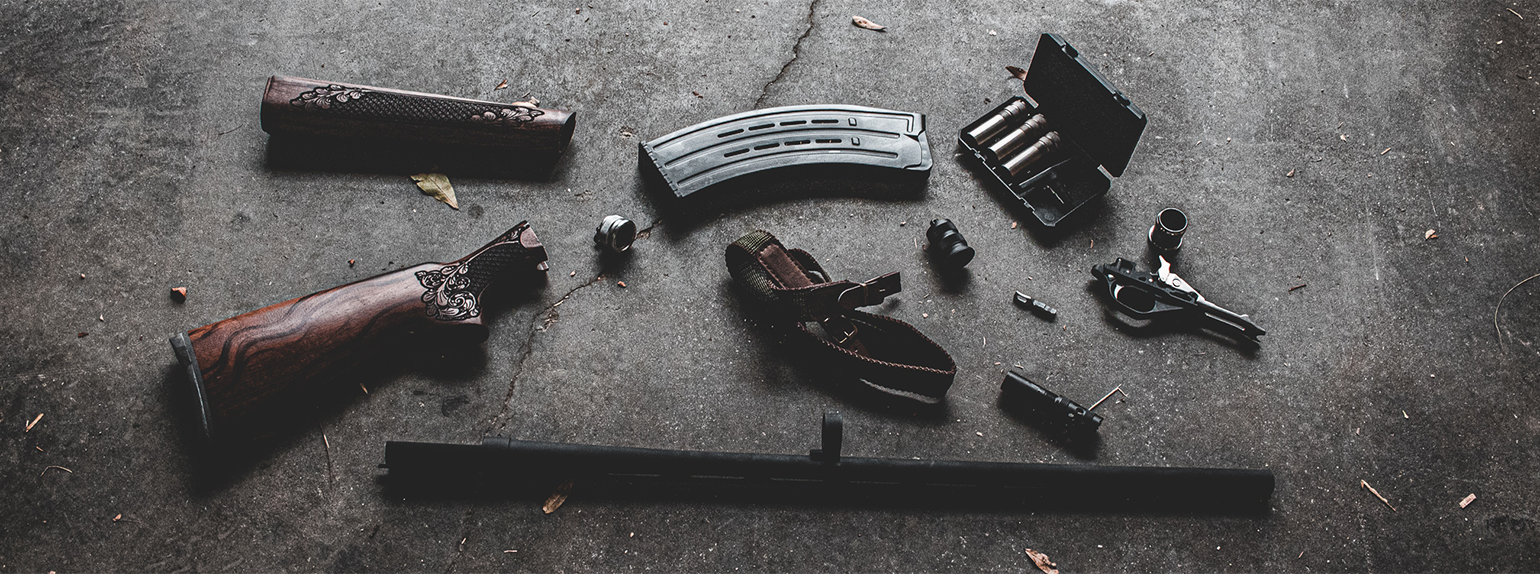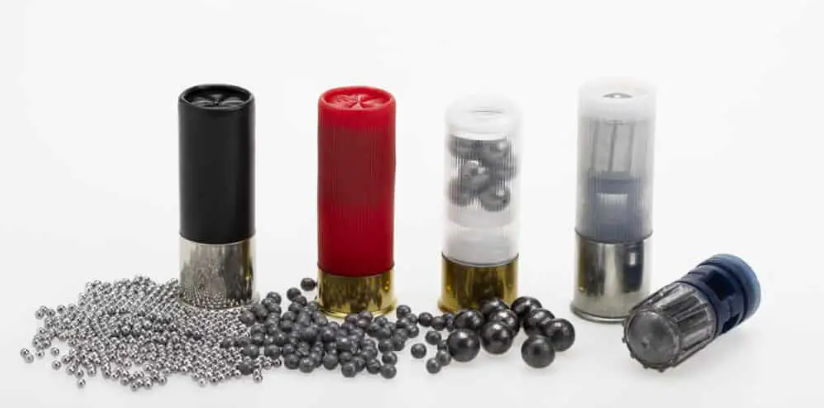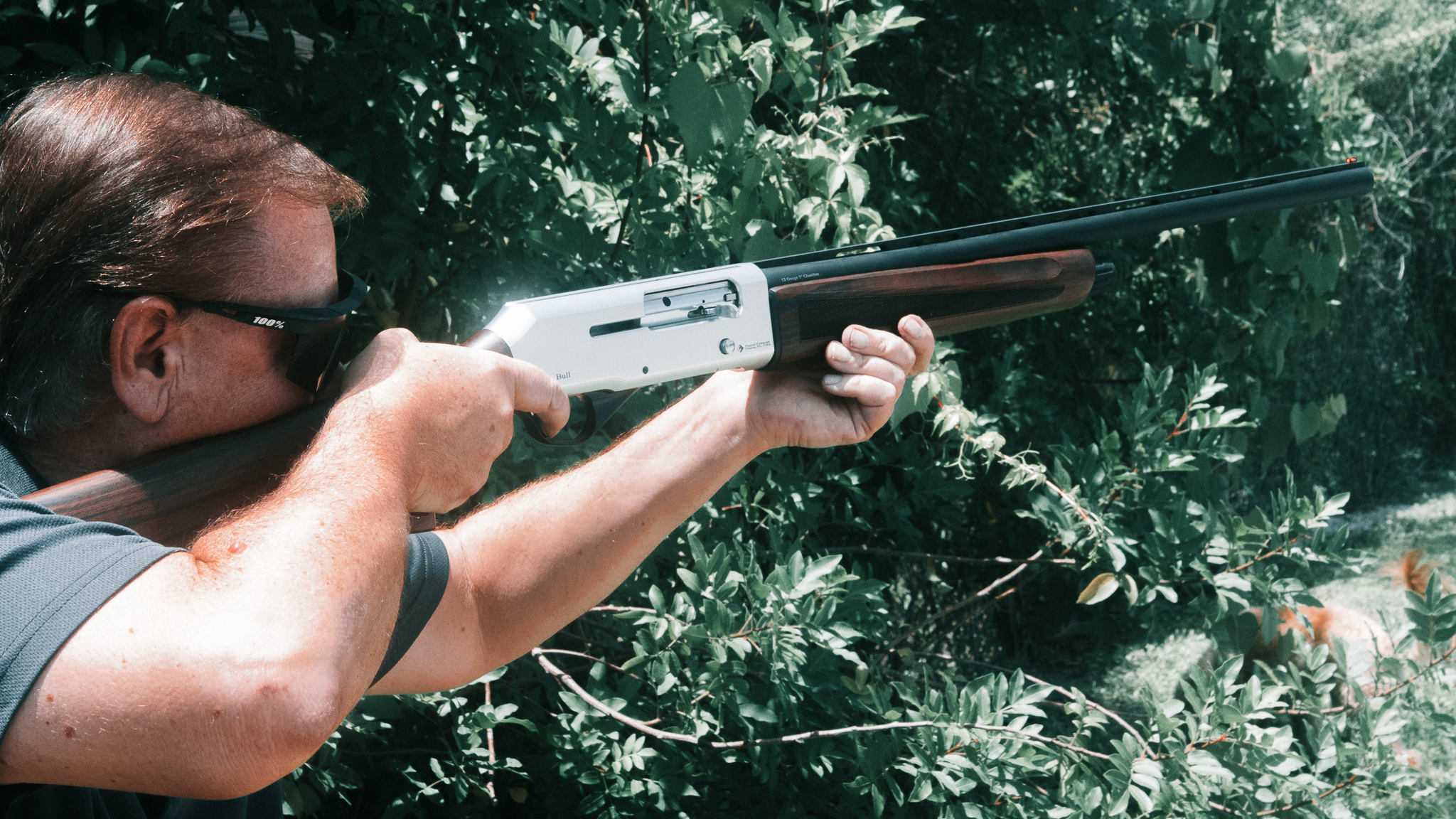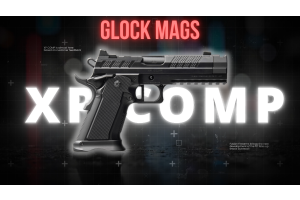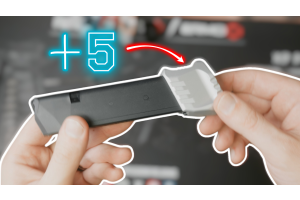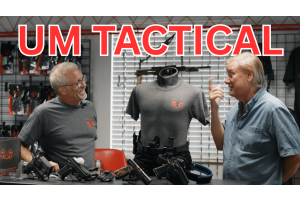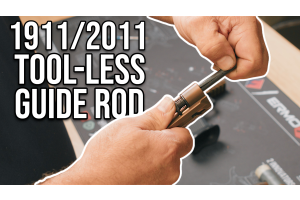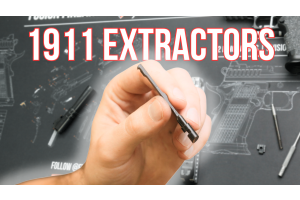The Evolution and Impact of Shotgun Slugs: A Comprehensive Guide
0%
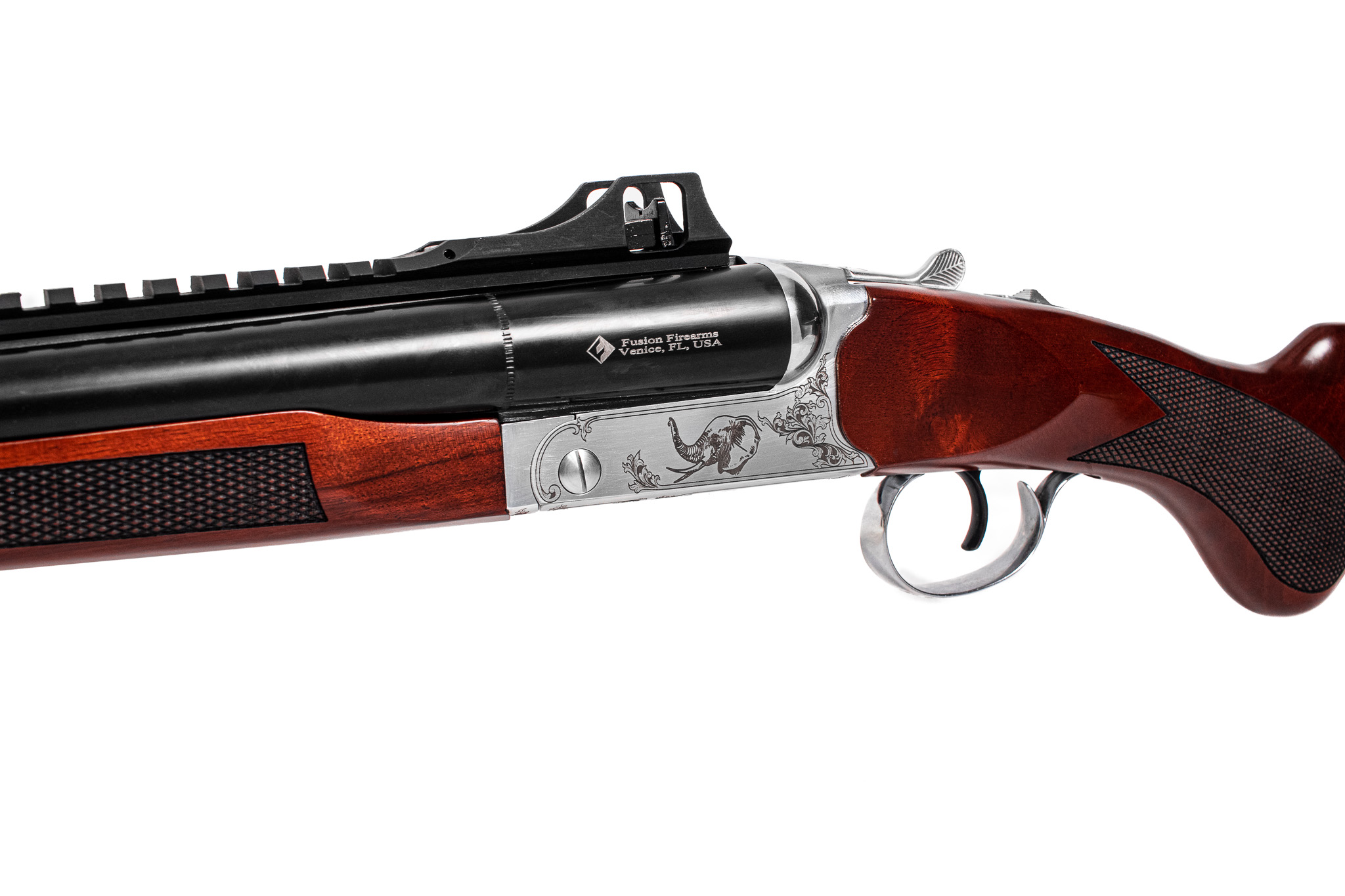
A shotgun, predominantly known for its scattering shot, has another ammunition type that often gets overshadowed: the shotgun slug. This solid projectile was designed for shotguns to mimic the accuracy of a rifle, especially when longer ranges and greater impact are necessary. This article delves into the origins, evolution, and diverse applications of shotgun slugs.
Key Points:
-
Shotgun Slugs: Solid projectiles for shotguns, offering rifle-like accuracy for longer ranges.
-
Historical Origins: Evolved from musket lead balls to modern slugs in the early 20th century.
-
Design and Mechanics:
-
Foster Slugs: Hollow-backed, best for smoothbore barrels.
-
Saboted Slugs: Designed for rifled barrels with spin for accuracy.
-
-
Applications:
-
Hunting: Safer alternative in restricted areas.
-
Self-defense: High stopping power.
-
Law Enforcement/Military: Precision and breaching uses.
-
-
Advantages:
-
Range: Increases shotgun's distance.
-
Stopping Power: High energy on impact.
-
Versatility: Changes shotgun's function with ammo swap.
-
-
12 Gauge Slugs:
-
Performance: Known for power and recoil. Effective range of 100-150 yards.
-
Uses: Big game hunting and self-defense.
-
-
The Slug Gun:
-
Definition: Shotgun tailored for slug ammo.
-
Features: Rifled barrels, optics, tight tolerances.
-
Advantages: Extended range and big game hunting.
-
-
The Rifled Slug:
-
Design: Solid with surface grooves, mainly for smoothbore shotguns.
-
Benefits: Versatility and cost-effectiveness.
-
-
Safety: Beware of over-penetration. Match slug type with shotgun barrel.
HISTORICAL ORIGINS
The concept of a slug is not new. In the early days of firearm usage, users would sometimes load their muskets with a solid lead ball, particularly when they were aiming for a single, large target or wanted to achieve more penetration than a scattering shot could provide. However, the dedicated shotgun slug as we know it today came into prominence in the early 20th century, allowing shotguns to be versatile in both close-quarters and longer-range engagements.
DESIGN AND MECHANICS OF THE SHOTGUN SLUG
Unlike the traditional birdshot or buckshot that disperses upon firing, the slug is a solid piece of lead, copper, or another material. There are two primary types:
-
Foster Slugs: These are hollow at the back and have rifling, although this rifling is largely aesthetic or for aerodynamic purposes rather than for imparting spin. They are designed to be fired from smooth bore shotgun barrels.
-
Saboted Slugs: Designed for rifled shotgun barrels, these slugs are encased in a plastic 'sabot' that falls away once fired. The rifling imparts a spin on the slug, providing it with greater accuracy over distance.
APPLICATIONS
Shotgun slugs have a broad range of applications:
-
Hunting: In places where rifle hunting is prohibited or unsafe due to the long range of rifle bullets, slugs provide a safer alternative with a much shorter effective range.
-
Self-defense: A slug can deliver a massive amount of stopping power, making it an option for home defense, especially when over-penetration or stray shots are a concern.
-
Law enforcement and military: Some tactical teams utilize slugs for breaching operations or when a precise shot is necessary.
ADVANTAGES OVER TRADITIONAL SHOT
-
Range: A slug extends the effective range of a shotgun, allowing it to be used in scenarios where buckshot would be ineffective.
-
Stopping Power: Due to its mass, a slug can deliver a tremendous amount of energy on impact.
-
Versatility: With a quick change of ammunition, a shotgun can be transformed from a close-quarters weapon to one capable of precise shots at a distance.
12 Gauge Slugs
The 12 gauge shotgun is perhaps the most popular shotgun caliber in the world, renowned for its versatility and power. Among its various types of ammunition, the slug stands out as a unique and potent option. Here, we delve deeper into the specifics of the 12 gauge slug.
Ballistics and Performance: 12 gauge slugs are known for their formidable stopping power, making them a favored choice for big game hunting. When fired, a slug can produce significant recoil, more so than typical buckshot. In terms of velocity, slugs can vary, with many commercial varieties achieving speeds of 1,500 to 1,800 feet per second. Their effective range is generally considered to be around 100-150 yards, but they can travel much farther.
Applications: The primary application for 12 gauge slugs is hunting big game, like deer, boar, and even bear. Their stopping power and relative accuracy at range make them ideal for this purpose. Additionally, slugs are used in some tactical and self-defense scenarios due to their penetration capabilities.
THE SLUG GUN
In the world of shotguns, a specific subset has been designed or modified explicitly for firing slugs: the slug gun. Here, we explore the nuances, advantages, and applications of the slug gun.
What is a Slug Gun? A slug gun is a shotgun optimized for firing slug ammunition. While many traditional shotguns can fire slugs, slug guns often have design features that specifically enhance the accuracy and effectiveness of shooting slugs.
Characteristics of a Slug Gun:
-
Rifled Barrel: Unlike the smoothbore barrels found in most shotguns, many slug guns have rifled barrels. The rifling imparts a spin on the sabot slug as it travels down the barrel, stabilizing it and increasing accuracy over longer distances.
-
Optics: Many slug guns come equipped with, or are drilled and tapped for, scopes or other optics. This not only aids in accuracy but also extends the effective range of the shotgun when using slugs.
-
Tight Tolerances: Slug guns often have tighter manufacturing tolerances to ensure that slugs seat and fire more consistently.
-
Stock Design: The stocks on slug guns might be designed to absorb more recoil, given the powerful kick that slugs can produce.
Advantages of a Slug Gun:
-
Extended Range: With the added accuracy from rifling and optics, slug guns can effectively engage targets at longer distances than typical shotguns.
-
Versatility: They offer the stopping power of a shotgun slug with the added precision of a rifled firearm.
-
Big Game Hunting: Particularly in areas where rifle hunting is prohibited or restricted, slug gunsprovide hunters with a powerful and precise alternative.
Popular Uses:
-
Deer Hunting: In many U.S. states, certain zones restrict hunters to shotguns during deer season. Slug guns become the preferred tool in these areas.
-
Tactical and Self-defense: Some users prefer slug guns for home defense because of their stopping power and reduced risk of over-penetration compared to some rifle rounds.
-
Sport Shooting: The challenge of hitting targets at extended ranges with a slug gun has made them popular in certain shooting sports.
The Rifled Slug
When it comes to shotgun ammunition, one type that has gained considerable attention for its distinctive design and versatile application is the rifled slug. Here, we delve into its origins, design features, and its place in modern shooting sports and hunting.
What is a Rifled Slug? A rifled slug is a type of shotgun ammunition that differs from traditional shot pellets. Instead of multiple small pellets, the rifled slug is a solid projectile designed to be fired from a shotgun. Despite its name, the rifling on the slug itself doesn't function in the same way as the rifling inside a gun barrel.
Design Features:
-
Grooves: The "rifling" on a rifled slug refers to the grooves cut or cast into the slug's surface. These grooves help reduce friction when the slug travels down a smoothbore barrel, allowing it to swage or compress slightly to fit tighter bores.
-
Solid Construction: Unlike traditional shot pellets that spread upon firing, the rifled slug remains a solid mass, providing a singular, heavy impact point.
-
Hollow Base: Many rifled slugs have a hollow base, which allows for better expansion and stabilization as the slug travels down the barrel.
Advantages of a Rifled Slug:
-
Versatility: Rifled slugs are designed to be fired from smoothbore shotguns, making them suitable for shotguns without a rifled barrel. This design allows shooters with traditional shotguns to engage targets at longer ranges.
-
Stopping Power: The solid construction means that rifled slugs have significant stopping power, making them a favorite for big game hunting and certain self-defense situations.
-
Cost: In many cases, rifled slugs are less expensive than specialized sabot slugs designed for rifled shotgun barrels.
Applications:
-
Hunting: Especially in areas where rifle hunting is restricted, rifled slugs offer hunters a viable solution for taking down big game.
-
Self-defense: While not as commonly used as buckshot for home defense, some individuals prefer rifled slugs for their stopping power and direct impact.
-
Target Shooting: For those looking to practice with slugs or engage in shooting competitions that involve slugs, the rifled slug is a popular choice.
CONSIDERATIONS AND SAFETY
When using slugs, one must be aware of their potential for over-penetration. While they provide increased accuracy and stopping power, they can pass through objects and continue with lethal force for a considerable distance. Always be sure of what lies beyond your target.
Also, it's essential to use the correct slug type for your shotgun barrel (rifled vs. smoothbore) to ensure optimal performance and safety.
CONCLUSION
The shotgun slug, an innovative adaptation in the world of firearms, has dramatically reshaped the conventional role of the shotgun. Once seen primarily as a close-quarters weapon tailored for specific scenarios, the introduction of the slug has elevated the shotgun to a multifaceted instrument suitable for a wide array of applications. From the dense woods where hunters seek big game to urban environments where individuals prioritize self-defense, the slug offers a unique combination of power and precision. For professional marksmen, law enforcement officers, and military personnel, the shotgun slug provides options previously unimagined in tactical scenarios. As with any tool or weapon, a comprehensive understanding of its strengths and weaknesses is essential. By recognizing both the impressive capabilities and inherent limitations of shotgun slugs, shooters are better equipped to make informed choices, ensuring they harness the maximum potential of their shotguns in any given situation.
FREQUENTLY ASKED QUESTIONS
-
How far can a shotgun slug travel?
A shotgun slug can travel over 1500 yards if fired at the right angle. However, the effective range for accuracy is considerably shorter, typically around 100-150 yards. -
Can a 12-gauge shotgun slug kill a bear?
Yes, a 12-gauge shotgun slug has the power to kill a bear, but shot placement is crucial. -
Can a shotgun slug kill an elephant?
While a slug has immense power, it is not recommended for hunting large animals like elephants. There are specialized large-caliber rifles for that purpose. -
Can a shotgun slug penetrate body armor?
Some body armors can stop shotgun slugs, but it depends on the armor's rating. For instance, a Level IIIA armor might stop a slug, but it's always crucial to refer to the armor's specifications. -
Can I shoot slugs out of a smoothbore shotgun?
Yes, particularly Foster slugs, which are designed for smoothbore barrels. -
Can I use slugs in my shotgun?
Most shotguns can shoot slugs, but always check the manufacturer's recommendations first. -
Can my shotgun shoot slugs?
Yes, most shotguns can shoot slugs, but always check for barrel and choke compatibility. -
Can slugs be shot from any shotgun?
Most shotguns can shoot slugs, but you should ensure compatibility and safety, especially with certain chokes. -
Can you reload shotgun slugs?
Yes, with the right equipment and components, shotgun slugs can be reloaded. -
Can you shoot a slug out of any shotgun?
While most shotguns can shoot slugs, it's essential to ensure barrel and choke compatibility. -
Can you shoot rifled slugs in a smoothbore shotgun?
Yes, rifled slugs (like Foster slugs) are designed for smoothbore barrels. -
Can you shoot slugs in any shotgun?
Most shotguns can shoot slugs, but always verify compatibility. -
Can you shoot slugs out of a semi-auto shotgun?
Yes, but ensure the ammo cycles correctly in the action and there are no obstructions. -
Can you shoot slugs out of a smooth bore shotgun?
Yes, particularly Foster slugs, which are designed for such barrels. -
How big is a shotgun slug?
The size varies, but a typical 12-gauge slug is .73 inches in diameter and can weigh an ounce or more. -
How do shotgun slugs work?
Shotgun slugs work by providing a single, large projectile that can be fired from a shotgun, allowing for more precise shooting than typical shot. -
How does a shotgun slug work?
It functions similarly to other projectiles but is larger and can deliver a significant impact, especially at close to medium ranges. -
How far can a shotgun shoot a slug?
While a slug can travel over 1500 yards, its effective range for accuracy is typically around 100-150 yards. -
How far can a shotgun slug go?
A slug can travel over 1500 yards under ideal conditions. -
How far can a shotgun slug shoot accurately?
Typically, a shotgun slug can be shot accurately up to 100-150 yards. -
How far can you shoot a shotgun slug?
While it can travel over 1500 yards, for hunting or tactical purposes, the effective range is around 100-150 yards. -
How far will a 12-gauge shotgun slug travel?
A 12-gauge slug can travel over 1500 yards, but accuracy is best within 100-150 yards. -
How much are shotgun slugs?
The price can vary based on brand, type, and region, but they typically cost more than regular shotgun shells. -
How to aim a shotgun with slugs?
Aiming with slugs is similar to other firearms; however, it's beneficial to have rifle sights or optics for better accuracy at range. -
How to load shotgun slugs?
Load them as you would other shotgun shells, ensuring you're using the correct slug for your barrel type. -
How to reload shotgun slugs?
Reloading requires specific equipment and components. If inexperienced, it's recommended to learn from an expert or take a class. -
What are shotgun slugs good for?
Shotgun slugs are primarily used for hunting larger game, like deer and boar, and can be used in situations that demand greater precision and stopping power than standard birdshot or buckshot. -
What are slugs for shotguns?
Slugs are a type of ammunition for shotguns that consist of a solid projectile designed for shooting at longer ranges with increased accuracy compared to typical shot pellets. -
What are slugs good for in shotguns?
Slugs are ideal for tasks that require more precision than buckshot, like hunting larger game or tactical applications. -
What are slugs in shotguns?
Slugs are solid projectiles for shotguns, providing an alternative to traditional pellet-filled shells. -
What is a shotgun slug?
A shotgun slug is a solid projectile designed specifically for a shotgun as opposed to multiple pellets found in birdshot or buckshot shells. -
What is the best shotgun slug?
The best slug depends on the intended use and the type of shotgun. Sabot slugs are popular for rifled barrels, while Foster slugs are preferred for smoothbores. -
What is the best slug for a smoothbore shotgun?
The Foster slug, often referred to as an "American rifled slug", is best suited for smoothbore shotguns. -
What is the most accurate slug shotgun?
Accuracy depends on the combination of slug type, shotgun, and shooter skill, but shotguns designed specifically for slugs, often with rifled barrels, tend to be the most accurate. -
What is the range of a 12-gauge shotgun slug?
A 12-gauge shotgun slug can travel over 1500 yards, but its effective accurate range is typically around 100-150 yards. -
What is the range of a shotgun slug?
While a slug can travel over 1500 yards, its typical effective accurate range is around 100-150 yards. -
What shotguns can shoot slugs?
Most shotguns can shoot slugs, but it's essential to ensure compatibility with the barrel and choke. -
What shotgun choke is best for slugs?
A cylinder bore choke or an improved cylinder choke is generally recommended for slugs. -
What shotgun choke to use for slugs?
It's best to use a cylinder bore or improved cylinder choke for slugs. -
What slug is best for a smoothbore shotgun?
The Foster slug is the recommended choice for smoothbore shotguns. -
What slugs do you use in a smoothbore shotgun?
Foster slugs or "rifled slugs" are the preferred type for smoothbore shotguns. -
What type of slug for a smoothbore shotgun?
The preferred type is the Foster slug, also known as the "rifled slug". -
What's the best shotgun slugs for deer hunting?
Sabot slugs are popular for deer hunting, especially when used with a rifled barrel shotgun. For smoothbore shotguns, Foster slugs are typically used. -
Where to buy shotgun slugs?
Shotgun slugs can be purchased at sporting goods stores, gun shops, or online firearm and ammunition retailers.


